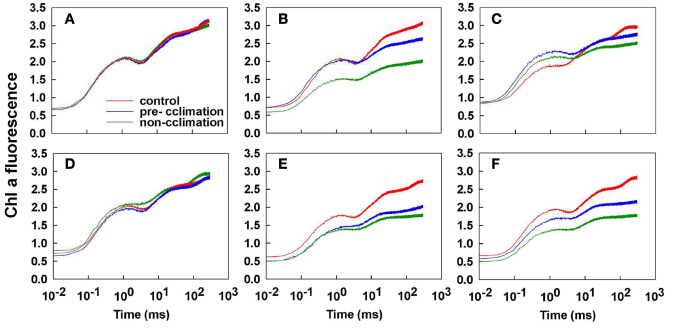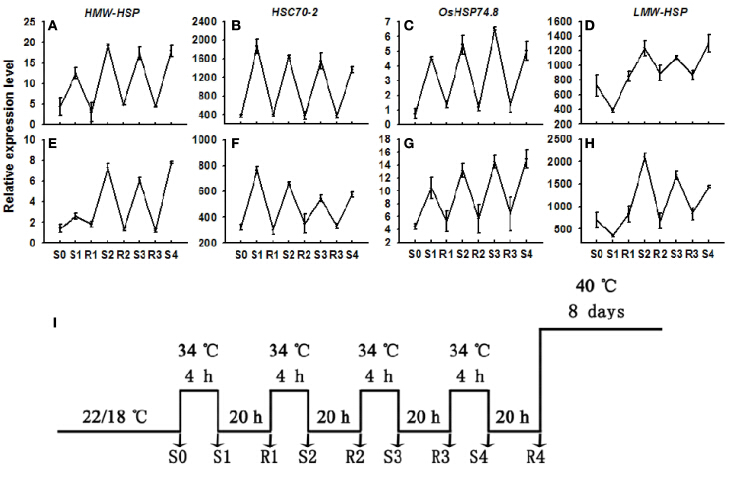Research Investigates High Temperature Acclimation with Stress Memory in Tall Fescue
2015-07-21
Stress memory has been forming in plants after being exposed to environmental stresses. A pre-exposure to a repeated biotic or abiotic stress may produce some appropriate alarm signal and faster reactions remembered by plants and recognized in subsequent stress. Although most of these stress-induced signal and reactions on physiology and gene expression are reset to the basal level once the stress is relieved, they may be stable and carried forward as a form of stress memory.
Tall fescue (Festuca arundinacea Schreb.) is the predominant forage and cool-season turfgrass species grown widely in the temperate regions of the world, but high temperature is a major factor limiting growth of tall fescue.
In this study, Prof. FU Jinmin and assistant Prof. HU Tao from Wuhan Botanical Garden investigated high temperature acclimation with stress memory. Heat tolerant PI 574522 and heat sensitive PI 512315, whose thermotolerance was identified through the summer adaptation test in Wu Han in 2010 and 2011, displayed memory functions related to recurring pre-exposure to high-temperature stresses.
A suppression of heat-induced physiological damage as well as the increased transcriptional responses from heat shock protein (HSP) genes demonstrated the concept of a memory from an earlier stress. The transcriptional memory from two detected trainable genes: HMW-HSP (high molecular weight HSP) and LMW-HSP (low molecular weight HSP) was activated early in the multiple acclimation stage and could be persistent under prolonged high-temperature conditions for 4 days.
Two tall fescue genotypes in pre-acclimation lines kept less severe decline at steps of chlorophyll a fluorescence (O-J-I-P) and inhibition at energy transport fluxes in active Photosystem II reaction center (PSII RC) than that in non-acclimation lines. The accumulation of metabolites in tall fescue in post-trainable treatment phases might reflect a stress memory response to high-temperature stress.
Results were published in Frontiers in Plant Science online entitled “Stress memory induced rearrangements of HSP transcription, photosystem II photochemistry and metabolism of tall fescue (Festuca arundinaceaSchreb.) in response to high-temperature stress”. This work was supported by the National Natural Science Foundation of China, China-Africa Center for Research and Education, CAS.

Comparison of Chlorophyll a fluorescence (OJIP) transients of control lines (22/18 °C day/night), and pre-accilimaton lines and non-accilimaton lines under heat stress (40/36 °C at day/night) in tall fescue leaves. (Image by HU Tao)

Transcript levels of non-trainable and trainable genes in plants before and after single or multiple heat stresses (Image by HU Tao)